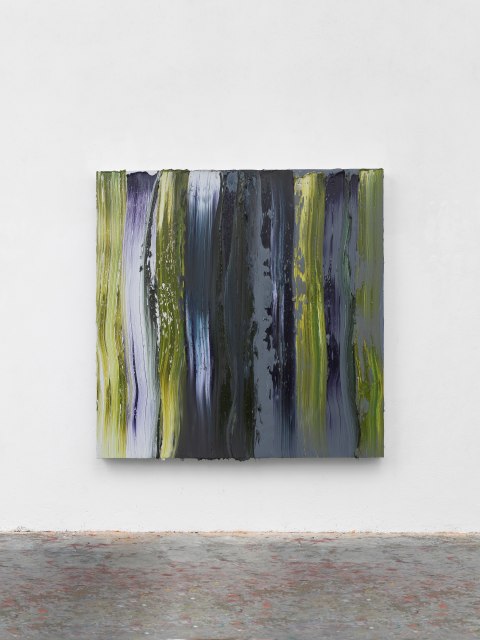Born 1970 I Lives and works in London, UK and Portugal
Jason Martin was born on Jersey in the Channel Islands in 1970. He studied at the Chelsea School of Art in London from 1989-90 and at Goldsmiths College from 1990-92. Martin was an exceptionally mature artist for his years already at the start of his career. He made his solo debut in 1996 at the Lisson Gallery, one of London’s most prominent venues, and participated the following year in the Royal Academy’s revolutionary exhibition Sensation: Young British Artists from the Saatchi Collection. His serious interest in the language and grammar of painting distinguished him from the most well-known painters of the YBA generation, however. He currently works in London and Portugal.
Martin’s oeuvre can be reduced to four pillars - monochrome, sculpture, material painting and hedonism. The laconic titles he gives his exhibitions reveal what these seemingly simple but profoundly-layered works are all about. Pink 001, Blue and Colour White refer to the idea of monochromatic painting and its historical representatives: Kazimir Malevich, Yves Klein and Anish Kapoor. Martin’s monochromes are often something more, however, as he modulates the basic tone of his paintings with sophisticated pigment additions.
Oils and Pigments, New Pigments, and Graphite refer to pigments and binders, and are thus sensory-conceptual materializations of the basic idea of painting. Critics have searched for the “original” act of painting or the emblematic image of the “first painting” in his richly tactile world. Martin paints mostly on aluminium, and sometimes stainless steel. Painting as Sculpture or Five Embossed Reliefs are sculptural paintings in which the colour of the material penetrates deeply into the viewer’s space. The plush draperies show how the baroque would have painted the monochrome, if it could have been imagined, or how modernism would have been enriched if anyone – apart from Alvar Aalto – had dared to use it.
The tactile nature of the abstractions suggests an enjoyment of the act of painting. The viewer also perceives the pre-linguistic dimensions of colour as corporeal, even before Pictures for Pleasure, Arcadia or Lux, Calme et Volupté put hedonism into words. Italy’s quattrocento, the early Renaissance in the 15th century, developed the concept of sprezzatura to describe the tensions that are hidden behind perfection. The sprezzatura of the objects Martin paints, a seemingly easily-achieved perfection, is a compilation of Agnes Martin’s subtle grid paintings, Robert Ryman’s pale pseudomonochromes and, more deeply concealed, Willem de Kooning’s corporeal expressionism.
